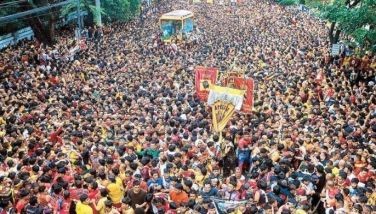From Pati to Clark Field
August 29, 2003 | 12:00am
On Monday, President Arroyo is slated to lead the toast over its evolution from Pati to probably the country’s most promising economic zone as Clark Field commemorates its 100th anniversary.
Sentiments of Central Luzon folk are with the President in marking Sept. 1, 1903 when then US President Theodore Roosevelt issued an executive order designating Pati as a military reservation for the US Cavalry called Fort Stotsenberg.
According to historians, Pati was the very site where, in mid-1897, Katipuneros in Pampanga launched lightning attacks against colonial Spanish forces and where, from 1899 to 1902, nationalist forces fought American patrols in what is now known as Angeles City.
Later, Pati was known internationally as the US Clark Air Force Base, which, for decades, had fostered closer ties between the Philippines and the US, until Mt. Pinatubo surged with fury in 1991, compelling the Americans to abandon Clark even before the Senate could outlaw foreign military bases in the country the following year.
When Mt. Pinatubo erupted in June 1991, it unleashed a catastrophe that saw its debris strewn worldwide. Understandably, the breadth of devastation at nearby Clark on the volcano’s eastern flank was nonpareil. To see the extent of the rack and ruin was to despair.
But it was not in the Filipinos’ character to lose hope. Even as the Senate officially sent off foreign military bases in the country in 1992, Clark remained a goldmine not only for its geography, but also for what the Americans had left on a wide expanse of level terrain: a solid network of fine roads, buildings and an airport covered by a thick mantel of volcanic debris. The rehabilitation was intimidating, but it had to be done.
What used to be the largest US military base outside of the US mainland, the 4,500-hectare area was declared the Clark special economic zone in 1993 with the Clark Development Corp. (CDC) at the reins. Cleared of tons of volcanic ash, Clark chugged on in fits and starts amid occasional "secondary explosions" on Mt. Pinatubo’s slopes.
That’s about a total of P89.66 billion and, as the trend continues, is still zooming. In the next five years, new investments are expected to increase current employment within Clark from 27,521 to 75,362. That’s not so much of addition as multiplication.
(To be concluded)
BrandSpace Articles
<
>
- Latest
- Trending
Trending
Latest
Trending
Latest
Recommended
January 10, 2025 - 12:00am






























